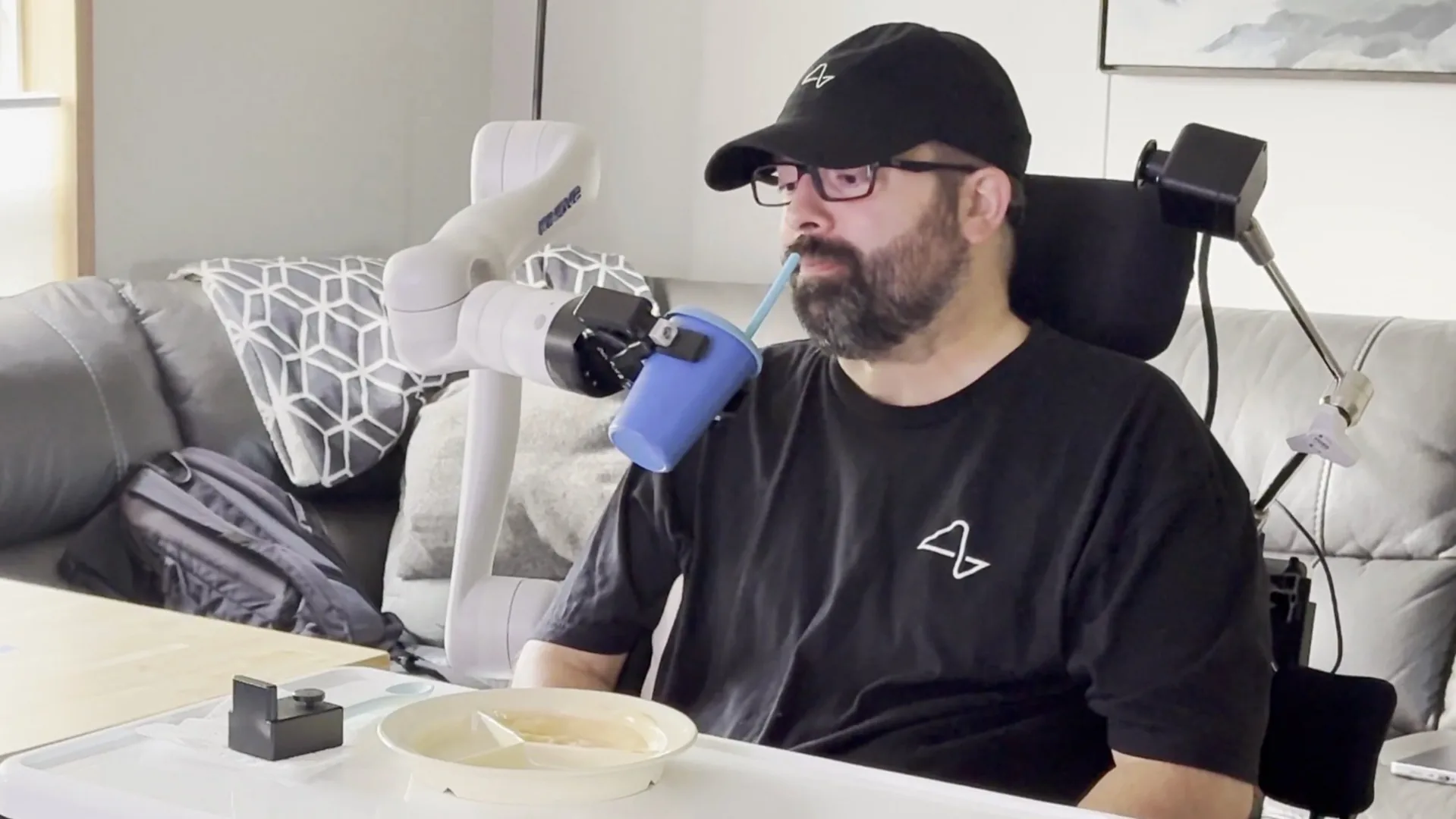Neuralink’s brain implant turns reality for Nick Wray. The ALS patient directs a robotic arm to grasp a cup and guide a straw to his lips. He savours the sip, then watches the arm lower the drink. “I’ll be able to talk with my hands again,” Wray declares as the arm cradles and shifts the cup.
This moment marks a massive success in assistive technology. Wray shared the demonstration in a video posted on Monday. He controls the arm through Neuralink’s chip, which translates neural signals into Bluetooth commands.
Last week, Wray tested the setup further.
“I put on my own hat for the first time in years! I microwaved my own chicken nuggets and fed myself! I learned how to open my fridge and how to remove and replace lids on jars! I even got to try driving my wheelchair with it slowly inside. I did really well!” he wrote in a tweet.
These feats restore independence lost to ALS. Wray received the implant in July. Neuralink now counts 12 human recipients. The chip first drew attention last year when its initial patient manipulated a laptop cursor and played games.
Elon Musk envisions broader applications. He promotes the device for paraplegics to command robotic limbs or Tesla’s Optimus humanoid.
Wray’s footage builds on Neuralink’s January preview of arm trials. It offers concrete proof of the technology’s promise.
Wray set new benchmarks in dexterity exercises.
“I also hold the new records (for now) for the most cylinders moved across the table in 5 minutes (39) and the most pegs flipped in a standard dexterity test (usually used for stroke patients) in 5 minutes,” he noted.
Such scores highlight the implant’s precision. Neuralink declined immediate comment on signal-to-action mechanics. Details on that process remain sparse. Wray plans more videos to showcase the arm’s uses.
What daily tasks might this unlock next for patients?
Consider Wray microwaving nuggets: simple acts regain profound meaning. Neuralink’s progress challenges assumptions about disability and control. Patients like Wray redefine autonomy. How soon could this scale to full-body exoskeletons?
The firm’s pace suggests answers lie close.
Wray’s story spotlights human drive amid hardware limits.
He not only tests the tech but pushes its records.
This blend of vulnerability and mastery captivates.
Follow Wray’s updates for the next chapter in brain-machine fusion.
(Video and photo credits: Credit: X.com user @Telepath_8)
